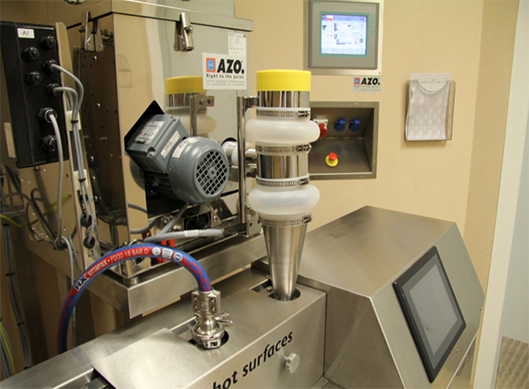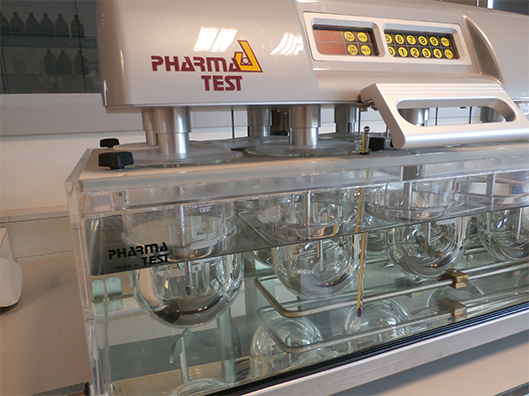API SOLUBILITY
Improving water solubility and bioavailability.
Continuous production of water soluble granules via
Twin Screw Granulation
Labo Smeets has developed in collaboration with Ghent University a technique to produce watersoluble granules containing poorly water soluble drugs of Class II (poorly soluble, highly permeable) or Class IV (poorly soluble, poorly permeable) of the Bio Classification System (BCS).
The granulation technique – in combination with suitable excipiens as polyethyleneglycols and maltodextrins – improves the extent but mainly the rate of dissolution of the poorly water soluble drug. The faster release of the API results often in an improved bioavailability and consequently a decreased intake of API to obtain the same clinical effect.
The technique can be applied for the production of human and veterinary medicines. Nowadays, the technique is used for the production of granules administered via drinking water to treat large groups of animals (poultry, pigs, ...). The produced granules can also be filled in capsules or can be used as intermediates for the production of tablets.
The main advantages of the technique are the continuous process, no grinding necessary after extrusion, low temperature process (50 °C), limited problems of upscaling and the absence of solvents by which no drying step is necessary. Supersaturation possible based upon formulation.
The Twin Screw Granulator (Pharma TSG 24) is supplied by Thermo Scientific, an important player in the production of twin screw granulators and extruders. A picture of the Twin Screw Granulator is shown below. The equipment is operational since January 2011.
Supersaturation
Relating to the technology to improve water solubility of Smeets we can improve solubility beyound the natural levels.
This is interesting in cases where drugs are to be administered throug drinking water dosage systems in veterinary applications.
Please contact us to hear more about this technology.
A supersaturated solution contains more dissolved material than could be dissolved under normal circomstances.
If free drug concentration is above equilibrium solubility , this can lead to to drug precipitation or crystallization.
How can we improve the stability of supersaturated solutions,
- by increasing the temperature (more thermic movement).
- in case of gases by increasing the temperature.
- by using inhibitors such as PEG 400, Tween or HPMC.
How is the mechanism of crystallization inhibitors?
- reducing crystallisation rate of drugs.
- providing a steric barrier to drug molecules and inhibit crystallization through specific intermolecular interactions on growing christal surfaces.
- adsorbtion onto faces of host crystals, reducing the crystal growth rate of the host and producing smaller crystal creases and thereby reducing the viscosity of the crystallization medium.
- in cases of very high supersaturation, nucleation is accelerated, leading to smaller crystals which may stay in suspension.
Ref :
Warren et al, journal of drug targeting, 2010;18(10):704-731
Princy Ann Abraham, University of New Jersy, Dissertation
Michal Elizabeth Matteucci, University of Texas, Dissertation


